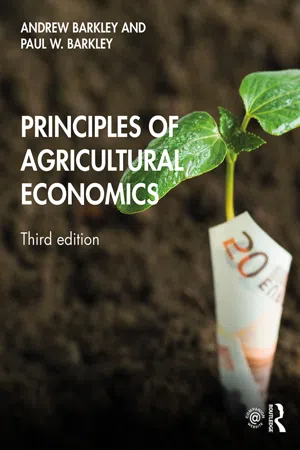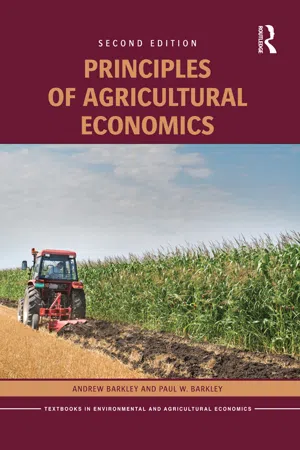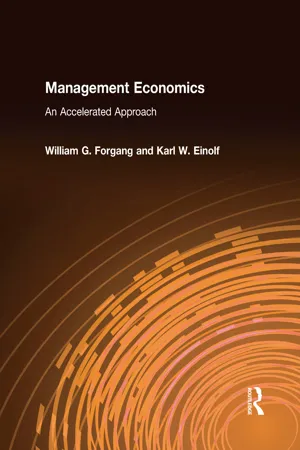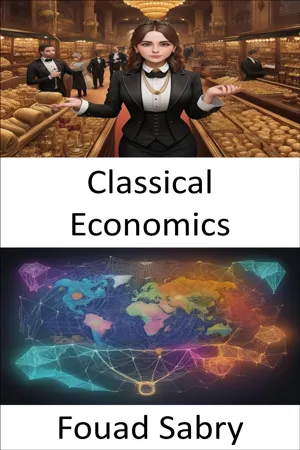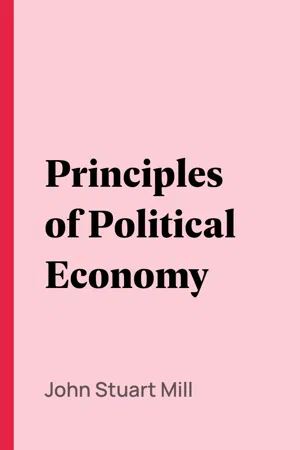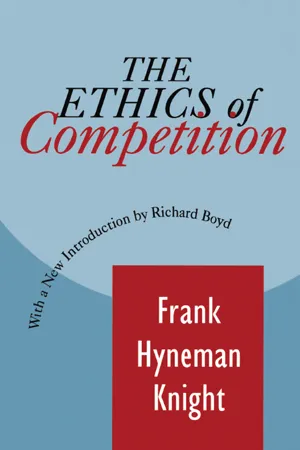Economics
Costs of Production
Costs of production refer to the expenses incurred by a firm in the process of manufacturing goods or providing services. These costs typically include expenses such as labor, raw materials, and overhead. Understanding and managing costs of production is crucial for businesses to determine pricing strategies, maximize profits, and make informed decisions about production levels.
Written by Perlego with AI-assistance
Related key terms
7 Key excerpts on "Costs of Production"
- eBook - ePub
- Andrew Barkley, Paul W. Barkley(Authors)
- 2020(Publication Date)
- Routledge(Publisher)
Chapter 3 The Costs of ProductionPhoto 3.1 The Costs of ProductionSource: cosma/ShutterstockAbstract
This chapter discusses the major motivating force behind all market-based economic behavior: profits. The economic concept of opportunity cost is highlighted, with examples of the next best alternative in professional and personal decision-making. A clear distinction between accounting profits and economic profits is described and explained. Special attention is given to cost relationships, including constant, decreasing, and increasing cost curves, and how they relate to production in real-world examples such as Walmart, feedlots, forestry, and meat packing plants.3.1 Profits
The study of production assumes that the goal of a business enterprise in a market-based economy is to maximize profits. This assumption applies to all firms, whether they are large multinational corporations, such as Amazon or Cargill, or small family-owned businesses, such as a family farm in Delaware or a family restaurant in Salem, Oregon. The study of Costs of Production begins with a simple definition of profits and how the level of profits relates to the Costs of Production. In the simplest possible form, this relationship can be written as:- (3.1) π = TR – TC.
Total revenue (TR) refers to how much money a firm earns from the sale of its output (Y). Multiplying the number of units of output (Y) by the per-unit price of the output (P) yields total revenue:- (3.2) TR = P * Y.
The level of total costs - eBook - ePub
- Andrew Barkley, Paul W. Barkley(Authors)
- 2016(Publication Date)
- Routledge(Publisher)
3The Costs of ProductionPlate 3.1 The Costs of ProductionSynopsis
This chapter discusses the major motivating force behind all market-based economic behavior: profits. The economic concept of opportunity cost is highlighted, with examples of the next-best alternative in professional and personal decision making. A clear distinction between accounting profits and economic profits is described and explained. Special attention is given to cost relationships, including constant, decreasing, and increasing cost curves, and how they relate to production in real-world examples such as Walmart, feedlots, forestry, and meat packing plants.3.1 Profits
The study of production assumes that the goal of a business enterprise in a market-based economy is to maximize Profits. This assumption applies to all firms, whether they are large multinational corporations such as Microsoft or Cargill, or small family-owned businesses such as a family farm in Delaware or a family restaurant in Salem, Oregon. The study of Costs of Production begins with a simple definition of profits and how the level of profits relates to the Costs of Production. In the simplest possible form, this relationship can be written as:(3.1) π = TR – TC.- Profits [r] = Total Revenue minus Total Costs. π = TR – TC (see Accounting Profits and Economic Profits ).
Total Revenue (TR) refers to how much money a firm earns from the sale of its output (Y). Multiplying the number of units of output (Y) by the per-unit price of the output (P) yields total revenue:(3.2) TR = P*Y.The units for TR are in dollars, since output (Y) times price (USD/Y) is in terms of dollars. The units of output cancel each other.The level of Total Costs - eBook - ePub
Management Economics: An Accelerated Approach
An Accelerated Approach
- William G. Forgang, Karl W. Einolf(Authors)
- 2015(Publication Date)
- Routledge(Publisher)
5The Costs of Production
This chapter examines the relationship between costs and output and discusses how a firm’s Costs of Production influence production, pricing, and competitive strategy decisions.Learning ObjectivesThe successful reader understands:• The relationship between costs and output• How costs affect production and pricing decisions• How costs affect the number and relative size of competitors in a market• How the structure of costs helps to define a firm’s competitive strategyThe primary question in this chapter is how costs vary with output. The answer depends upon the economic time period . Economists recognize four distinct time periods: the market period, the short run, the long run, and the very long run. The time period distinctions do not coincide with calendar time. Rather, the time periods refer to degrees of flexibility in the production process. Other topics in this chapter include the relationship between the Costs of Production and the number and relative size of firms in an industry as well as the business strategy implications of a firm’s Costs of Production.Accounting and Economic CostsBefore examining the economic time periods, it is necessary to establish that economists view costs differently than accountants do. Economists include opportunity costs, which affect the allocation of finite resources among competing uses.Consider the video rental store in Table 5.1 . This store’s gross sales revenue is $100,000. The direct payments for rent, videos, utilities, and labor total $80,000.Table 5.1 Explicit Costs and Accounting ProfitIncome Statement Item $ Gross sales revenue $100,000 • Rent, materials, labor, and utilities $80,000 Accounting profit $20,000 Table 5.1 shows the video store’s profit is $20,000. This calculation is the accountant’s definition of profit. Accountants consider only direct payments. In Table 5.1 - eBook - ePub
Classical Economics
Unlocking the Wealth of Nations, a Journey Through Classical Economics
- Fouad Sabry(Author)
- 2023(Publication Date)
- One Billion Knowledgeable(Publisher)
the economic price of production. This price, a total cost-price (i.e. a replacement cost), equals the average cost price and average profit rate of an output at the point of sale to the final consumer, including all costs incurred by all the different enterprises participating in its production (factory, storage, transport, packaging, etc.), plus tax imposts, insurance levies, etc. In modern times, "costing" production in order to determine the expected return on capital invested typically entails evaluating the entire value chain in relation to the price at which products can be sold to the end consumer. How can the entire production of a product - from the factory gate to the final consumer - be organized so that it can be sold to the final consumer at a price that the market will bear - and still make a profit? Marx sometimes refers to a "economic production price" when, for argument's sake, he abstracts from everything that occurs between the factory gate and the final consumer of a commodity.When analyzing the composition of a product's cost structure at various stages of production and distribution, these disparate prices become apparent. Marx's frequent assumption in his shorthand drafts that these six kinds of prices all refer to the same thing is a source of interpretive difficulty. However, this is only the case when one business sells directly to the final consumer.Marx's real analytical concern was likely not with pricing processes in and of themselves, but with the primary factors influencing the realization and distribution of new surplus-value produced when sales occur. In the end, his argument was that competition in capitalism revolves around the pursuit of maximizing surplus-value in the form of generic profit income (profit, interest, rent). How does a sum of capital invested in production become an even greater sum of capital? What are the dynamics and outcomes of this procedure? What are the implications for the economic reproduction procedure? - eBook - ePub
Principles of Political Economy
Abridged with Critical, Bibliographical, and Explanatory Notes, and a Sketch of the History of Political Economy
- John Stuart Mill, J. Laurence (James Laurence) Laughlin, (Authors)
- 2009(Publication Date)
- Perlego(Publisher)
Chapter II. Ultimate Analysis Of Cost Of Production.§ 1. Of Labor, the principal Element in Cost of Production.
The component elements of Cost of Production have been set forth in the First Part of this inquiry.214 The principal of them, and so much the principal as to be nearly the sole, was found to be Labor. What the production of a thing costs to its producer, or its series of producers, is the labor expended in producing it. If we consider as the producer the capitalist who makes the advances, the word Labor may be replaced by the word Wages: what the produce costs to him, is the wages which he has had to pay. At the first glance, indeed, this seems to be only a part of his outlay, since he has not only paid wages to laborers, but has likewise provided them with tools, materials, and perhaps buildings. These tools, materials, and buildings, however, were produced by labor and capital; and their value, like that of the article to the production of which they are subservient, depends on cost of production, which again is resolvable into labor. The cost of production of broadcloth does not wholly consist in the wages of weavers; which alone are directly paid by the cloth-manufacturer. It consists also of the wages of spinners and wool-combers, and, it may be added, of shepherds, all of which the clothier has paid for in the price of yarn. It consists, too, of the wages of builders and brick-makers, which he has reimbursed in the contract price of erecting his factory. It partly consists of the wages of machine-makers, iron-founders, and miners. And to these must be added the wages of the carriers who transported any of [pg 265] the means and appliances of the production to the place where they were to be used, and the product itself to the place where it is to be sold.Confirmation is here given, in the above words, of the opinion that, in Mr. Mill's mind, Cost of Production was looked at wholly from the stand-point of the capitalist, and was identical with Cost of Labor to the capitalist. - eBook - ePub
- Frank Knight(Author)
- 2017(Publication Date)
- Routledge(Publisher)
The statement that the cost of production and the price of any good are equal really signifies simply that productive resources are divided between the production of that good and the production of other goods for which they might be used in such a way that none of the resources can produce more value by being transferred either way. If cost is above price, some productive services are being used for the good in question which are worth more somewhere else, and if cost is below price, some productive services are being used for other goods which would be worth more to produce the good in question. To avoid false inferences commonly drawn, it should again be emphasized that there is no necessary connection between pecuniary demand and real worth, and hence this reasoning in no wise vindicates the competitive system, and would not do so even if its tendencies came to literal realization. Our present concern is merely the question of accuracy in describing its workings, in terms of their final, long-run tendencies, which should be done correctly before critical judgment is passed. Under the conditions necessary to competitive production, and looking to the final results of competitive tendencies, the cost of production is without exception a direct or increasing function of output. A more or less important qualification relates to the extent to which cost necessarily increases with output. For commodities which do not represent an appreciable fraction of the demand for any productive resource which goes into them, the change in cost corresponding to probable changes in output may indeed be practically negligible. The function may represent virtually constant cost. For example, the case of steel rails may be contrasted with that of carpet tacks - eBook - ePub
Production and Cost Functions
Specification, Measurement and Applications
- Erkin Bairam(Author)
- 2018(Publication Date)
- Routledge(Publisher)
This chapter considers the accounting problems of describing and measuring production, cost and profit functions in practice and the implications of this for economic theory and the econometric estimation of these functions and other related matters. Many economists and econometricians tend to interpret the financial data provided by accountants from the viewpoint of neo-classical economic theory. Due to the difficulties associated with operationalising this theoretical approach significant problems arise in econometric work in comparing facts with theories. An alternative approach to understanding the nature and properties of production, cost and profit functions based upon accounting measurements is outlined in this chapter. Basic concepts are defined at the most micro-economic level in terms of observable (and measurable) variables. It is shown how this characterization supports a general statistical understanding of production, cost and profit functions and how it relates to the problem of aggregation.II. Production and Cost Functions in Economic Theory
The term ‘production function’ in economic theory is usually associated with the description of hypothetical physical input-output relationships, i.e. the variables described by the particular theory are expressed in non-financial measurements. The general functional specification isO = f(, i = 1 t o nI i) ( 1 )where O is a physical output measure and theIiare physical input measures.6 In theoretical analysis the inputs are often restricted to two different kinds, denoted L and K to stand for ‘labour’ and ‘capital’ respectively. An example of one such theory is the so-called ‘Cobb-Douglas’ production function,O = A( t )L αK β ( 2 )Here A(t) is a time dependent ’scale parameter’ which supposedly denotes a technological progress variable and α and β are further parameters affecting the shape of the relationship between the dependent and independent variables.7 Many other specific forms of production functions have been discussed theoretically and examined econometrically. These include ‘homogeneous’ functions like the Cobb-Douglas (which share the property that, for any proportionate change in inputs, output changes by that same proportion raised to some power) and others where the assumption of homogeneity is relaxed (see Bairam, 1994 and Chapter 1 ). With the exception of the Linear Programming interpretation of production functions, little thought appears to have been given to the basic measurement question of whether mathematical expressions such as that described in(2)
Learn about this page
Index pages curate the most relevant extracts from our library of academic textbooks. They’ve been created using an in-house natural language model (NLM), each adding context and meaning to key research topics.
